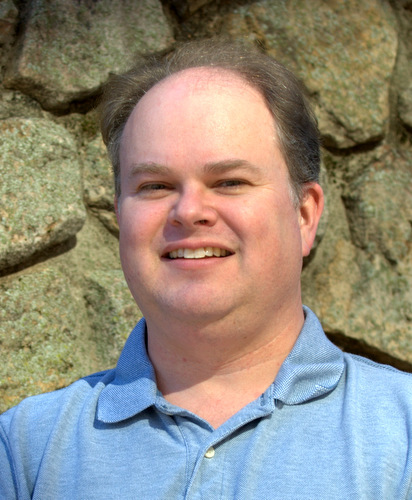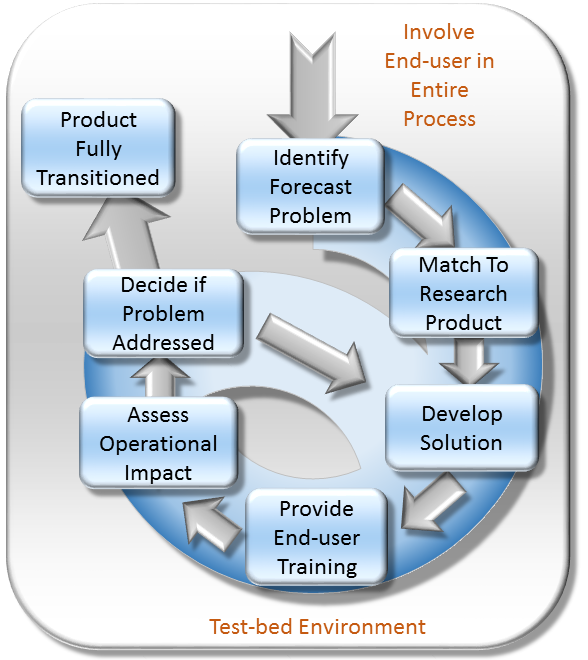
Dr. Clay B. Blankenship

Dr. Blankenship has been at the NSSTC since 2007 with the Universities Space Research Association. He joined SPoRT in 2012 and also works with SERVIR and other MSFC scientists. Dr. Blankenship has led NASA-funded efforts to assimilate satellite soil moisture observations from SMOS and SMAP into the Land Information System (LIS) ), assessing their impact on modeled soil moisture and subsequently on weather forecasts. He currently maintains the experimental Alaska LIS run for SPoRT. He is also involved in other remote sensing and numerical modeling projects including using LIS in forecast mode to provide soil moisture conditions for locust monitoring in Africa (with SERVIR), and radiative transfer modeling for aerosol studies and ocean flux estimation. His previous projects include developing physical satellite retrievals, investigations of interannual changes in water vapor and precipitation, and development of a global climatology of severe hailstorms from microwave satellite observations.
Dr. Blankenship was previously employed by the Naval Research Laboratory's Marine Meteorology Division, where he worked on satellite data assimilation in a global weather model. He earned his M.S. and Ph.D. in Atmospheric Sciences at Texas A&M University, with a focus on radiative transfer and microwave remote sensing and the retrieval of water vapor profiles.
Contact at: clay.blankenship@nasa.gov
Education
- Ph.D., Atmospheric Science, Texas A&M University (2000), Texas A&M University, Atmospheric Science
- M.S., Atmospheric Science, Texas A&M University (1997), Texas A&M University, Atmospheric Science
- Bachelor of Arts in Physics (1993), Auburn University, Physics Department
Positions
- Atmospheric Scientist, 2007 - Current, Universities Space Research Association (USRA), Space Technology Institute at NASA-MSFC, Huntsville, AL
- Meteorologist, 2003 - 2007, Naval Research Laboratory, Monterey, CA
- ASEE Postdoc, 2000 - 2003, Naval Research Laboratory, Monterey, CA
- Graduate Assistant-Research, 1993 - 2000, Department of Atmospheric Sciences, Texas A&M University
Publications
-
Nair, U., E. Rappin, E. Foshee, W. Smith, R. A. Pielke, Sr., R. Mahmood, J. L. Case, C. B. Blankenship , M. Shepherd, J. A. Santanello, and D. Niyogi, 2019: Influence of Land Cover and Soil Moisture based Brown Ocean Effect on an Extreme Rainfall Event from a Louisiana Gulf Coast Tropical System. Scientific Reports (9) 17136.
Blankenship, C. B. , J. L. Case, W. L. Crosson, and B. T. Zavodsky, 2018: Correction of Forcing-Related Spatial Artifacts in a Land Surface Model by Satellite Soil Moisture Data Assimilation. IEEE Geosci. Remote Sens. Lett., 15(4), 498-502.
Blankenship, C. B., J. L. Case, B. T. Zavodsky, and W. L. Crosson, 2016: Assimilation of SMOS Retrievals in the Land Information System. IEEE Trans. Geosci. Remote Sens, 54 (11), 6320-6332.
Zavodsky, B. T., J. L. Case, C. B. Blankenship, W. L. Crosson, K. D. White, 2013: Application of next-generation satellite data to a high-resolution, real-time land surface model. Earthzine, J. Kart, editor, Institute of Electrical and Electronics Engineers.
Cecil, D.J. and C. B. Blankenship, 2012: Toward a Global Climatology of Severe Hailstorms as Estimated by Satellite Passive Microwave Imagers. J. Climate, 25, 687-703.
Baker, N.L. et al., 2006: Assimilation of Polar-Orbiting Satellite Sounder Radiances for Improved Battlespace Characterization. 2005 NRL Review, Naval Research Laboratory, Washington, DC.
Blankenship, C. B. and T. T. Wilheit, 2001: Passive microwave observations of water vapor profiles during two ENSO events. Journal of Geophysical Research Atmospheres, 106, 5239-5254
Blankenship, C. B., Al-Khalaf, A.K., and Wilheit, T.T., 2000. Retrieval of water vapor profiles using SSM/T-2 and SSM/I data. Journal of the Atmospheric Sciences, 57, 939-955

